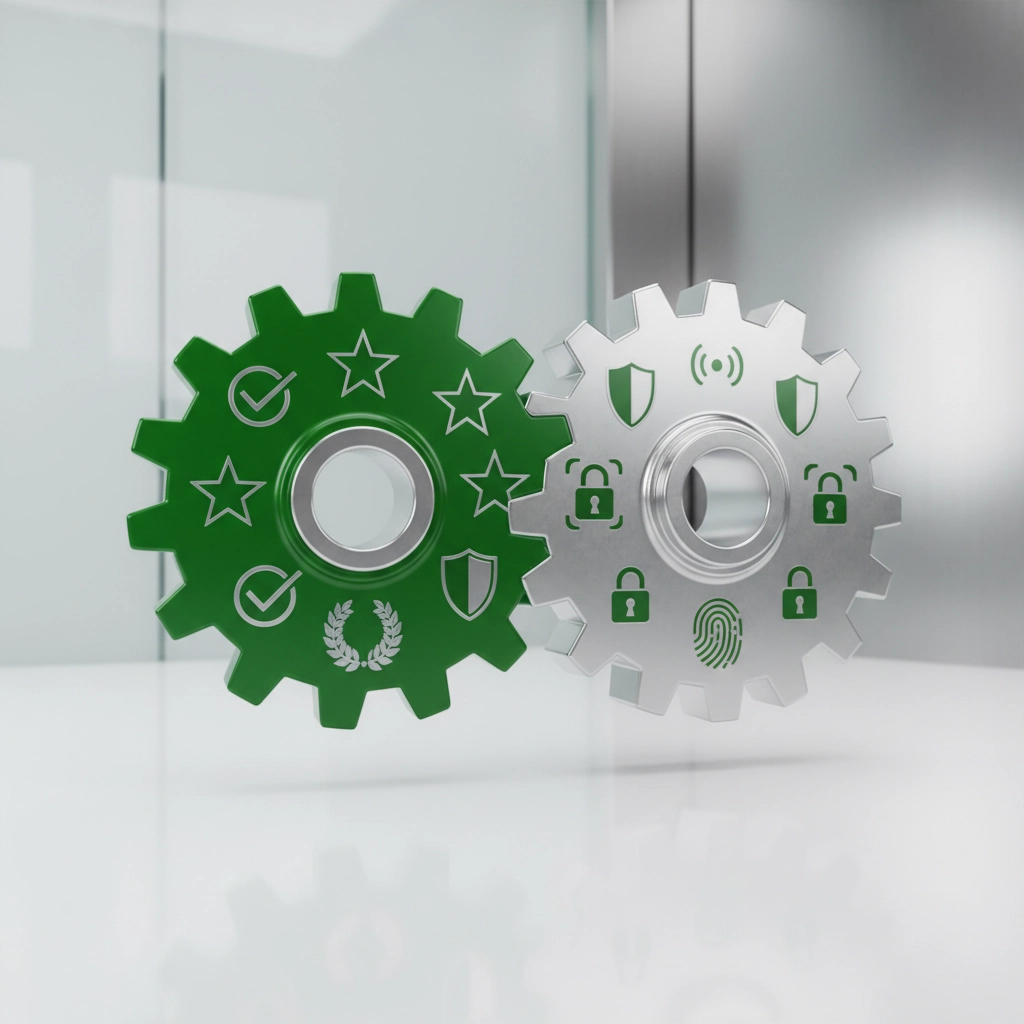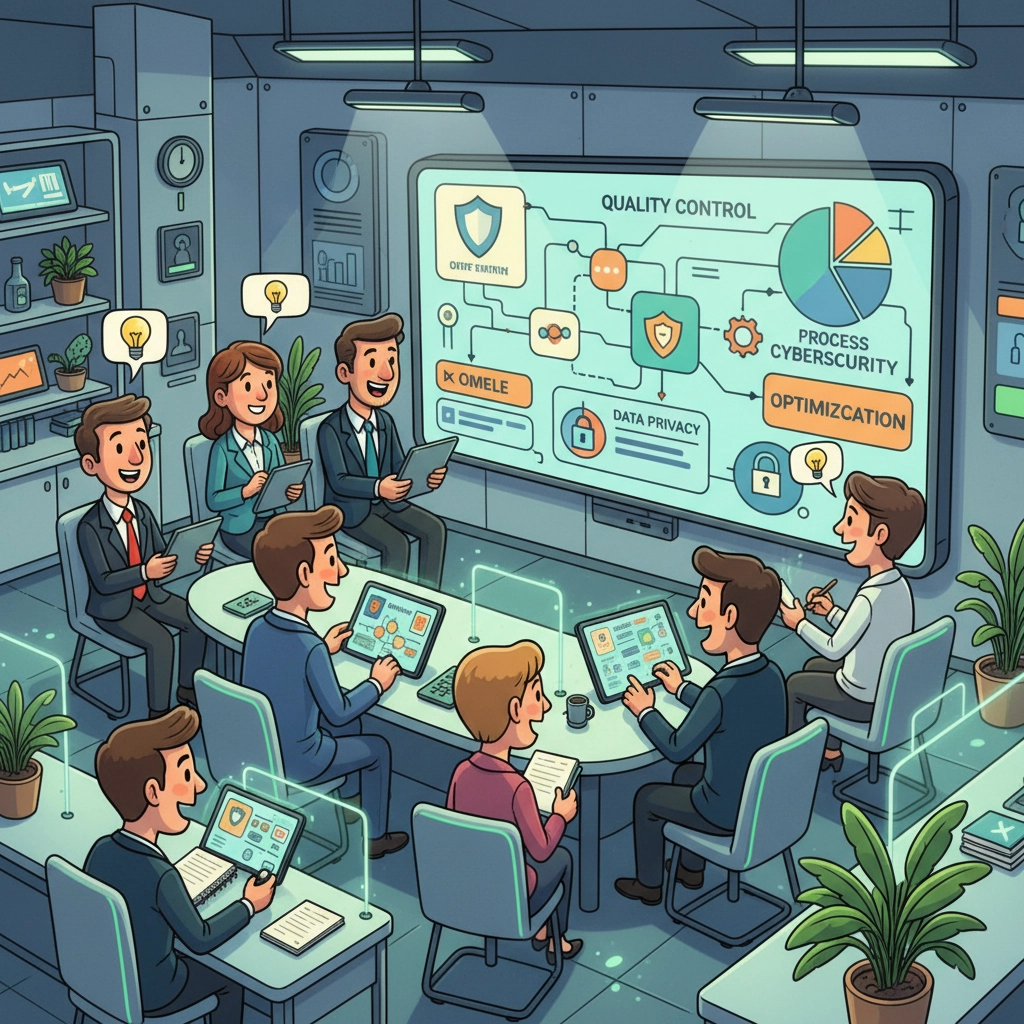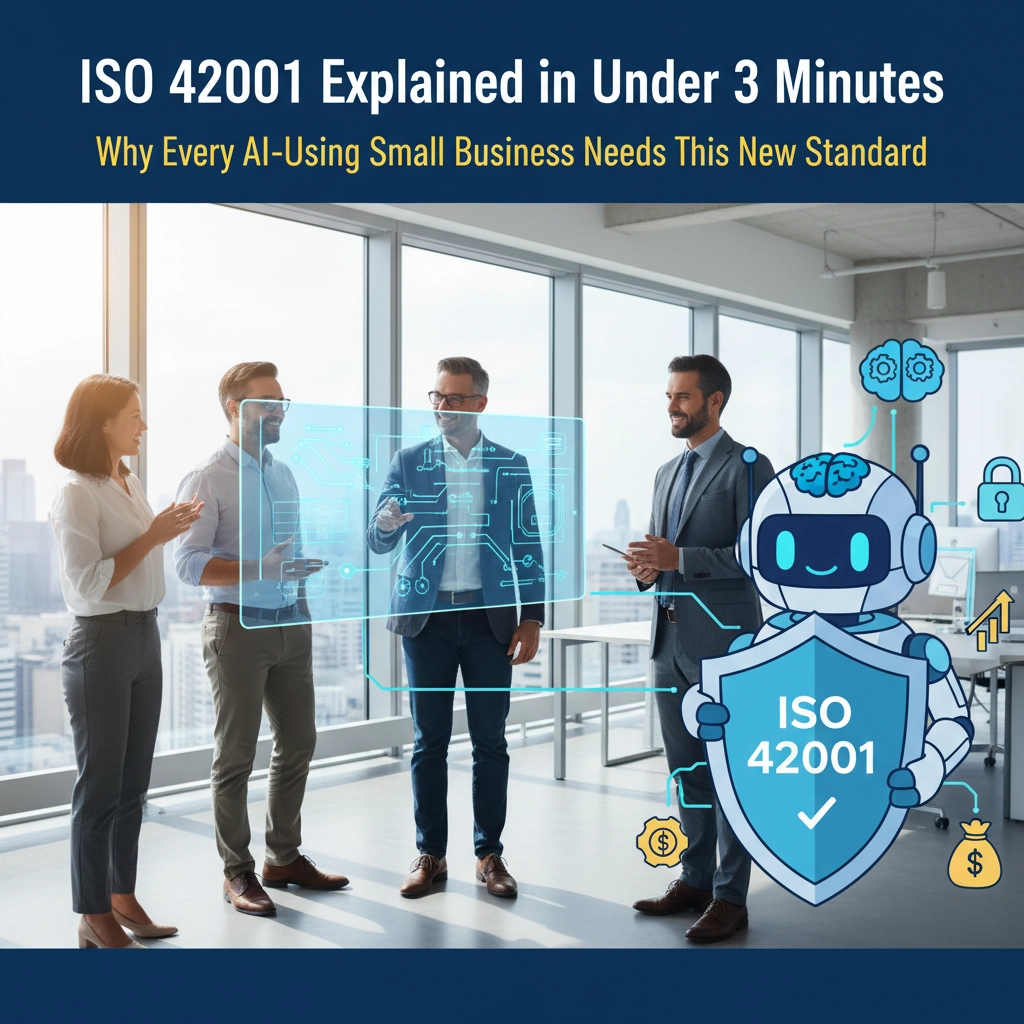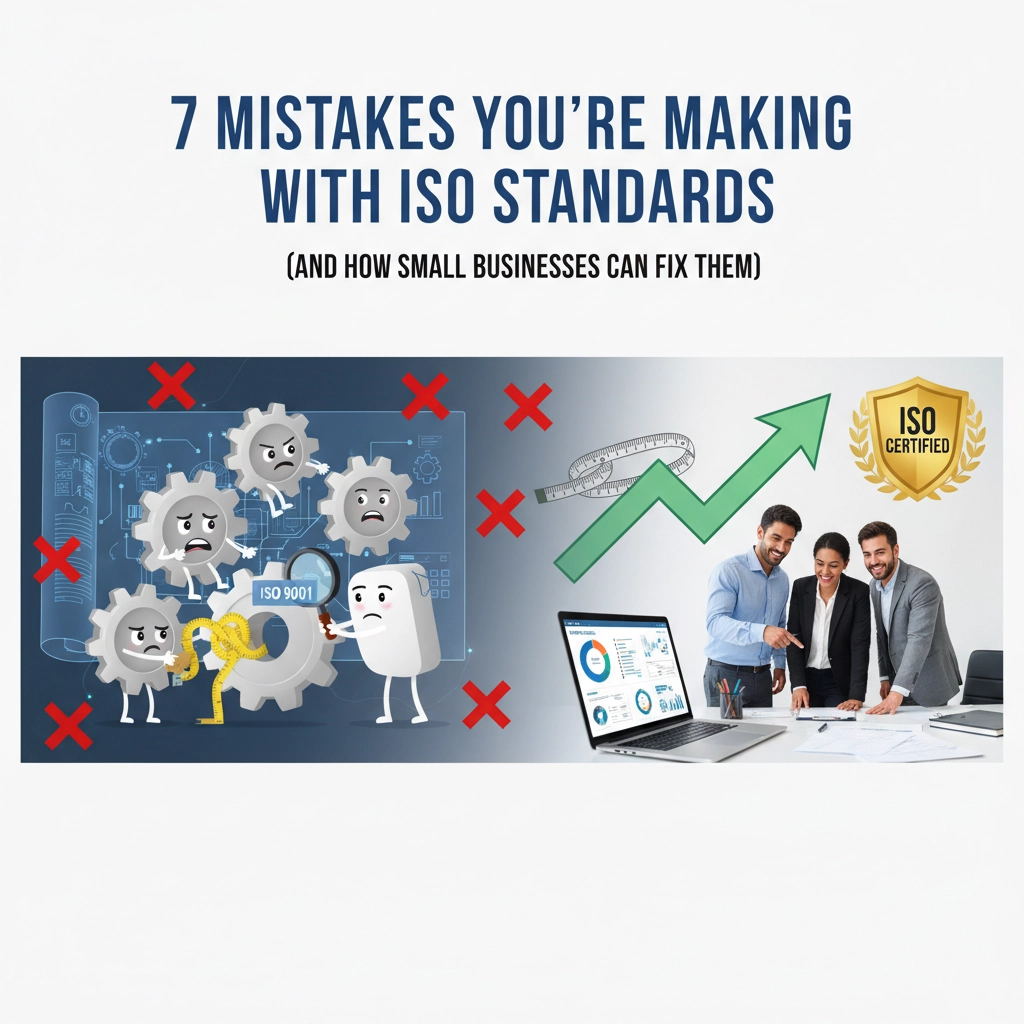
How to Get ISO 9001 and ISO 27001 Certified in 5 Steps: The Integrated Approach for Micro Businesses
0
0
0
Are you running a micro business and feeling overwhelmed by the thought of ISO certification? You're not alone. Many small business owners assume that ISO 9001 (Quality Management) and ISO 27001 (Information Security Management) certifications are only for large corporations with dedicated compliance teams. But here's the thing – getting both certifications simultaneously can actually save you time, money, and give your business the credibility boost it deserves.
The integrated approach isn't just smart; it's essential for micro businesses operating in today's competitive landscape. Instead of tackling these certifications separately and duplicating efforts, you can build complementary management systems that work together seamlessly.

Step 1: Preparation and Resource Planning
Your journey starts with securing commitment from the top – and in a micro business, that's probably you! As the owner or senior management team, you need to champion both quality and information security initiatives. This isn't just about ticking boxes; it's about transforming how your business operates.
Start by identifying your common objectives. Both ISO 9001 and ISO 27001 ultimately aim to satisfy your customers and protect what matters most to your business. Quality management ensures you deliver consistent, excellent service, while information security management protects the data and systems that make it all possible.
Here's what you need to do:
Appoint a project manager (this might be you!) responsible for scoping, timelines, and communication for both standards
Assess your current resources and identify what additional support you might need
Set realistic timelines – most micro businesses can achieve integrated certification within 6-12 months
Consider working with consultants experienced in integrated management systems
Don't try to do everything alone. Working with experts who understand both standards can save you significant time and ensure you're building systems that actually work for your business size and complexity.
Step 2: Scope Definition and Gap Analysis
This is where you get clear about what you're actually certifying. For micro businesses, the scope often includes your entire organization – and that's actually an advantage because it means everything is aligned and working together.
Define your Quality Management System (QMS) scope by identifying all the processes that affect customer satisfaction. This includes everything from how you handle customer inquiries to how you deliver your products or services.
Define your Information Security Management System (ISMS) scope by determining what information needs protection and which assets, systems, or services are critical to your business and customer trust.

Conduct your gap analysis by examining your current state against both standards' requirements. Ask yourself:
What quality processes do we have in place, and what's missing?
How do we currently protect customer data and business information?
What documentation exists, and what needs to be created or improved?
Where are our biggest risks in both quality delivery and information security?
This pre-audit phase reveals exactly what you need to develop or improve. The good news? Many requirements overlap, so you'll be killing two birds with one stone.
Step 3: Integrated Documentation and System Development
Here's where the magic happens – you're going to build unified systems that address both standards simultaneously. This integrated approach is particularly brilliant for micro businesses because it reduces duplication and administrative burden.
Create unified policies that encompass both quality and information security requirements. For example, your customer data handling procedure can address both quality record-keeping requirements and data protection obligations.
Build a single risk management framework that covers both quality risks (like product defects or service failures) and information security risks (like data breaches or system vulnerabilities). This gives you a holistic view of everything that could threaten your business.
Your documentation should include:
Integrated policy manual covering both quality and security commitments
Process procedures that embed both quality standards and security controls
Work instructions that your team can actually follow in daily operations
Risk register covering all types of business risks
Training materials that address both quality and security awareness
Remember, documentation in micro businesses should be practical and usable, not bureaucratic paperwork that sits on a shelf.

Step 4: Implementation and Training
Now you're going to introduce these new integrated procedures to your team through shared training and awareness programs. This is crucial – your systems are only as good as the people operating them.
Focus on cultural change. Help your team understand that quality and security aren't separate concerns – they're integral parts of delivering excellent service and protecting your business reputation.
Provide joint training sessions on both management systems. Your employees need to understand:
Why both quality and security matter to customers and business success
Their role in maintaining both systems
How to spot and report both quality issues and security concerns
The new processes and procedures they need to follow
Embed controls into daily operations. This phase should yield numerous process improvements and efficiency gains as you standardize both quality and security practices. Focus on making compliance feel natural, not burdensome.
For micro businesses, this often involves significant but positive change. Your team will adapt to new ways of working that consider both quality outcomes and information security in every process.
Step 5: Internal Audit and Certification
You're on the home stretch! This final step involves conducting combined internal audits to assess compliance with both standards simultaneously. This streamlined evaluation process ensures continuous improvement while reducing the audit burden on your small team.
Conduct regular self-assessments to ensure your integrated systems are working effectively. Internal audits serve as health checks for both your quality management and information security practices.
Prepare for external certification by engaging with a certification body that can perform integrated audits for both standards. The certification process includes:
Documentation review where auditors examine your integrated policies and procedures
On-site assessment where they observe your systems in action and interview your team
Certification decision based on how well you meet both standards' requirements

Plan for ongoing maintenance through surveillance audits (annually) and recertification audits (every three years). The integrated approach means these maintenance activities can often be combined, reducing costs and administrative overhead.
Why This Integrated Approach Works for Micro Businesses
The benefits of pursuing both certifications simultaneously are compelling for micro businesses:
Cost efficiency – You'll save money on consultancy fees, audit costs, and administrative time by doing both certifications together rather than separately.
Reduced complexity – Instead of managing two separate systems, you have one integrated approach that your small team can actually handle.
Enhanced credibility – Having both certifications demonstrates serious commitment to excellence and security, giving you a competitive edge when bidding for contracts.
Operational synergies – Quality and security objectives naturally complement each other, creating a more robust business foundation.
Streamlined maintenance – Ongoing compliance activities can be combined, reducing the long-term administrative burden.
Real examples include software development companies creating unified quality systems with secure coding protocols, or service providers developing standardized procedures that prioritize both service excellence and data protection.

Ready to Get Started?
Getting both ISO 9001 and ISO 27001 certifications doesn't have to be overwhelming for your micro business. The integrated approach we've outlined gives you a practical, efficient path to certification that actually strengthens your business rather than just adding paperwork.
Remember, this isn't just about compliance – it's about building systems that help your business thrive. Quality management ensures you consistently delight customers, while information security management protects the assets that make your business possible.
The key is starting with proper planning and staying focused on building systems that work for your business size and complexity. With the right approach, you can achieve both certifications within 6-12 months and start reaping the benefits immediately.
Your customers are looking for businesses they can trust with their projects and their data. Dual ISO certification sends a powerful message that you take both quality delivery and information security seriously. In today's competitive marketplace, that's not just nice to have – it's essential for sustainable growth.
Are you ready to take your micro business to the next level with integrated ISO certification? The journey starts with that first step of commitment and planning. Your future self will thank you for making this investment in your business foundation.






